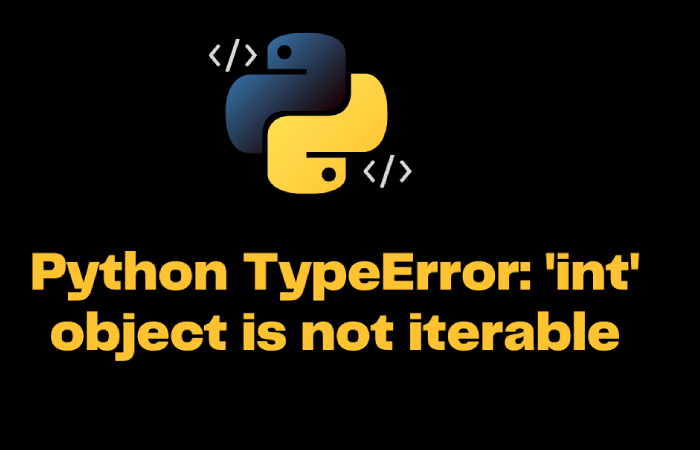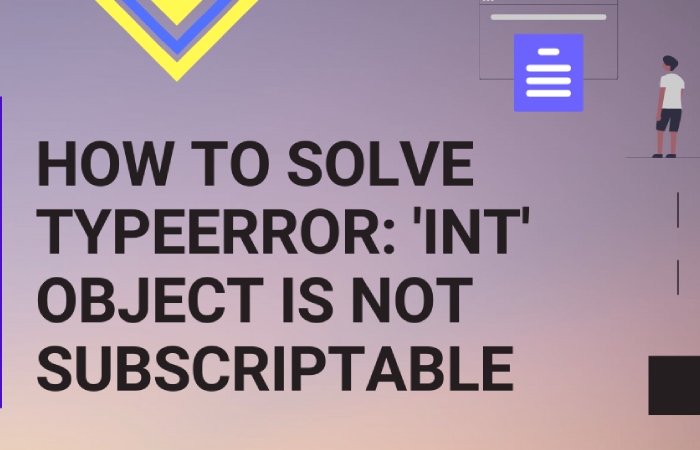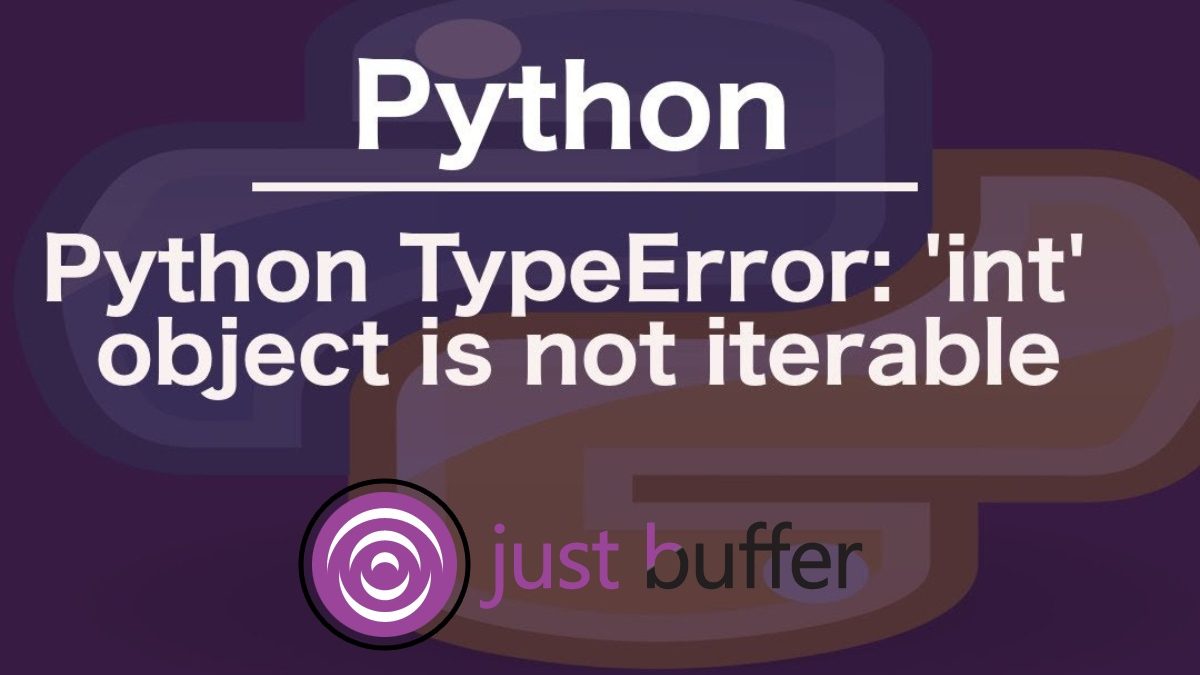Table of Contents
Introduction
typeerror: ‘int’ object is not iterable – The python typeerror: ‘int’ object is not iterable but is an omission that occurs when you are trying to loop through an integer value. However, in Python, winding through an object requires the source to be “iterable”.
Since integers are not iterable objects. Henceforth, looping an integer raises the typeerror: ‘int’ object is not an iterable exception. Moreover, we will discuss about the Python type error, How to fix typeerror: ‘int’ object is not iterable, How to avoid typeerror: ‘int’ object is not iterable, and finally, tracking and managing errors with roll bar issues.
Typeerror: Int Object Is Not Iterable

The issue “TypeError: ‘int’ object issue indicates that you are attempting to loop through an object that loops cannot operate on, such as an integer, when your Python code is running.
List, tuples, sets, dictionaries, and more are included in Iterable data in Python. Additionally, the fact that this error is a “TypeError” indicates that you are attempting to operate on an incorrect data type. Adding a string and an integer, for instance.
You shouldn’t encounter this problem when running Python code after today because I’ll demonstrate how to fix it and how to check for the “iter “magic methods so you can determine whether an object is broken in this article.
Knowing about Python Type Error Int Not Iterable Example
Let’s look at an example of a Python typeerror: ‘int’ object is not iterable, which will be thrown when trying to loop over an integer value.
- myint =10
- For i in myint:
- Print (i)
However, In the above example, myint is attempted to be an integer over. And since myint is an number and not an iterable object. It can be iterating over and raises:
- “File test.py”, line 3, in <module>
- For i in myint:
- Typeerror: ‘int’ object is not iterable
Stating On How to Fix Typeerror Int Object

Lets discuss the methods to resolve Python typeerror: ‘int’.
In the below example, myint cannot be iterated over since it is not an numeral value. The Python range( ) function can be used now to get an iterable entity that contains a sequential numbering that starts from 0 and stops before the definite figure.
Modernizing the above example to use the range( ) function in the for loop that fixes the error:
- myint = 10
- for I in range(myint):
- print(i)
Furthermore, the above code produces the following output as expected:
| 0 |
| 1 |
| 2 |
| 3 |
| 4 |
| 5 |
| 6 |
| 7 |
| 8 |
| 9 |
How to avoid Python Typeerror Int Object
The python typeerror: ‘int’ object is not an iterable error that can be avoided by checking if the value is an integer before iterating over it.
By following the process, a check can be added to the above example:
- myint = 10
- if is instance(myint, int):
- print(“Cannot iterate over a integer”)
- Else:
- for I in myint:
- print(i)
An example of a Python error if the type of an object is not known
- myint = 10
- attempt:
- for I in myint:
- print(i)
- but TypeError:
- print(“Object should be an iterable”)
Track, Analyze and Manage Errors with Rollbar
It might be challenging to manage mistakes and exceptions in your code. It can make the process of deploying production code unsettling. You can move forward with more assurance if you can track, analyze, and handle problems in real time. Correcting Python problems is now simpler than ever, thanks to Roll Bar’s automated error monitoring and triaging.
Conclusion
In the above article, Our website Just Buffer has gathered the information about the “Int Article isn’t iterable” mistake and how to fix it. And you also came to know about methods to see that it is feasible to check regardless of whether an article or a few pieces of information are iterable. By assuming that you check for the “iter” sorcery technique in particular information and you don’t track down it, it’s smarter not to endeavor to circle through the data by any means since they’re not iterable.


